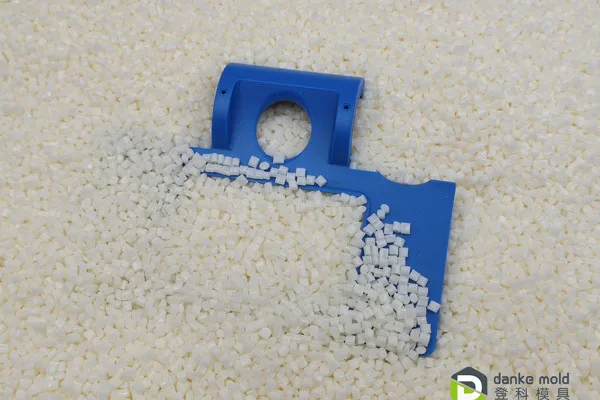The particular difficulties of high-volume manufacturing can determine the success of your product. Strategic planning and methodical execution are necessary to produce thousands or millions of units while maintaining constant quality. As production scales increase, many businesses struggle with quality degradation.
The pressure to meet aggressive delivery schedules often compromises quality standards. Your success is based on creating products that meet specs, regardless of production volume. Understanding how to maintain quality at scale separates successful manufacturers from those who fail.
Statistical Process Control Systems for High-Volume Manufacturing Success
High-volume manufacturing demands sophisticated monitoring systems that track quality metrics in real-time. Traditional inspection methods become impractical when producing thousands of units daily. Statistical process control provides the framework for maintaining consistent quality across large production runs.
Control charts help you identify quality trends before they become significant problems. High-volume manufacturing generates massive amounts of data that can reveal patterns invisible to manual inspection. These charts show when processes drift outside acceptable limits.
Sampling strategies must balance thoroughness with practical constraints in high-volume manufacturing. You cannot inspect every part without slowing production to unacceptable levels. Statistical sampling provides confidence in quality while maintaining production speed.
Process capability studies establish baseline performance expectations. High-volume manufacturing requires processes that operate consistently within tight control limits. Capability studies identify processes that need improvement before production begins.
Key statistical tools include:
- Real-time process monitoring dashboards
- Automated data collection and analysis systems
- Control chart software for trend identification
- Sampling plans optimized for production volume
- Process capability assessment protocols
- Variation reduction analysis techniques
Automated Quality Inspection Technologies in High Volume Manufacturing
Automated inspection systems that eliminate human error and increase inspection speed greatly benefit high-volume manufacturing. Machine vision systems can inspect parts faster and more consistently than human operators. These systems integrate directly into production lines without slowing throughput.
Coordinate measuring machines (CMMs) provide precise dimensional verification for critical features. High-volume manufacturing requires measurement systems that match production speed while maintaining accuracy. Automated CMMs can inspect complex geometries quickly and repeatably.
In-line testing equipment catches defects immediately during production. High-volume manufacturing creates early defect detection opportunities, preventing waste and rework. Automated testing systems provide instant feedback to production operators.
Digital documentation systems maintain complete inspection records for every part produced. High-volume manufacturing generates enormous amounts of quality data that must be stored and analyzed, and digital systems provide instant access to historical quality information.
Artificial intelligence enhances automated inspection capabilities by learning from historical data. Machine learning algorithms identify subtle quality patterns that traditional systems miss. These systems continuously improve their detection capabilities over time.

Plastic pellets
Supplier Quality Management Strategies for High-Volume Manufacturing
High-volume manufacturing depends heavily on supplier quality performance. The quality of your final product cannot exceed the quality of incoming materials and components. Supplier quality management becomes critical for maintaining standards at scale.
Supplier audits and certifications establish baseline quality expectations. High-volume manufacturing requires suppliers who understand and meet stringent quality requirements. Regular audits verify that suppliers maintain their quality systems consistently.
Incoming inspection programs protect your production processes from defective materials. Statistical sampling plans balance inspection costs with quality assurance needs. Risk-based inspection focuses resources on critical components and problem suppliers.
Supplier development programs help vendors improve their quality capabilities. High-volume manufacturing creates opportunities for long-term partnerships that benefit both parties. Technical assistance and training programs raise supplier quality levels.
Performance scorecards track supplier quality metrics over time. Data-driven supplier management identifies quality trends and improvement opportunities. Regular performance reviews maintain supplier focus on quality objectives.
Workforce Training and Quality Culture Development
High-volume manufacturing requires workers who understand their role in maintaining quality standards. Comprehensive training programs ensure that every employee knows quality requirements and procedures. Regular refresher training maintains skill levels and reinforces the importance of quality.
Quality awareness programs create a culture where every worker takes responsibility for quality. High-volume manufacturing succeeds when quality becomes everyone’s job, not just the quality departments. Recognition programs reward quality achievements and maintain motivation.
Cross-training programs ensure quality continuity during shift changes and employee absences. High-volume manufacturing operates continuously, requiring qualified personnel at all times. Multi-skilled workers provide flexibility while maintaining quality standards.
Continuous improvement programs engage workers in quality enhancement activities. Employee suggestions often identify practical quality improvements that management overlooks. Structured improvement programs channel worker knowledge into actionable quality initiatives.
Error-proofing techniques prevent common quality mistakes during production. Systems that make it difficult or impossible to create defects benefit high-volume manufacturing. Simple changes to tools, fixtures, and procedures can eliminate entire categories of quality problems.
Cost-Effective Quality Management Systems
Quality costs money, but poor-quality costs more. High-volume manufacturing requires cost-effective quality systems that provide maximum protection with minimum investment. Strategic quality planning balances quality requirements with budget constraints.
Prevention-focused quality systems cost less than detection and correction approaches. Investing in process control prevents defects more economically than finding and fixing them later. High-volume manufacturing amplifies the cost benefits of defect prevention.
Quality system integration reduces redundant activities and overhead costs. Combining quality functions with production operations eliminates waste and improves communication. Integrated systems provide better quality results at lower costs.
Technology investments often pay for themselves through reduced labor costs and improved quality. High-volume manufacturing creates scale economies that justify advanced quality technologies. Automated systems provide consistent quality while reducing long-term costs.
High-volume manufacturing success depends on maintaining quality standards while managing costs and delivery schedules. Your quality management system must scale with production volume while maintaining effectiveness. Strategic planning and disciplined execution create sustainable quality advantages that protect your market position.
Looking for reliable high-volume manufacturing services with proven quality systems? Contact Danke Mold today to streamline your production process with expert outsourcing solutions.
